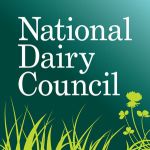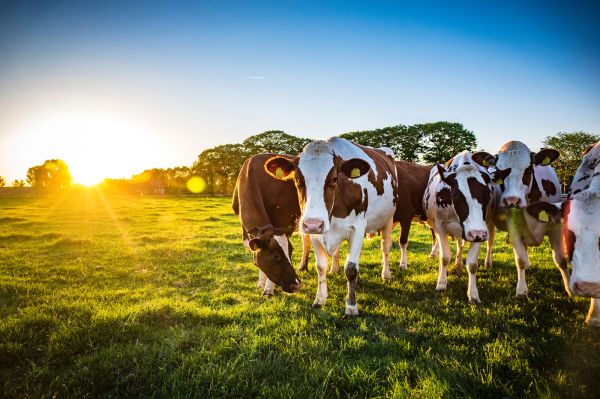
Breeding season - preparation is key

“These events (Breeding Week) were very important for farmers because the key is always in the preparation," says Sandra.
That comes down to ensuring that cows have optimum body condition score prior to breeding, as well as timing around vaccination programmes so that they do not interfere with breeding regimes, she further explains.
Another aspect of breeding covered at the Breeding Week events around the country included the Dairy Beef 500 programme.
"Dairy farmers have made massive strides in the use of the Dairy Beef Index (DBI). We had stock on display at the regional venues that demonstrated the positive outcomes of utilising the Commercial Beef Value (CBV) when making breeding decisions, particularly around the choice of beef-type bulls. The livestock marts have been very supportive in the introduction and highlighting of CBV values and that has really driven the interest in, and the development of the programme. The quality of the stock coming through from the dairy-beef programme has been tremendous and we want that to continue," says Sandra..
New breeding priorities
Output has plateaued in terms of the number of cows on Irish dairy farms so that’s necessitated a huge change in breeding policy, Sandra agrees: “All you need now, basically, on most farms are dairy replacements and after that calves are for sale or for finishing. So, it’s important to breed the best quality of stock that you can and develop a dependable market for those beef calves every year. Buyers return annually when they know the calves they buy are quality beef bred stock that can be finished in a two-year cycle. Genetics is playing an important role in regard to the Economic Breeding Index (EBI) for the top-quality dairy stock, and it’s also having a role in DBI with the beef. Quality is coming through, which is important. The ability of farmers to adopt, to pivot to new circumstances is impressive and that can be clearly seen in breeding strategies where both top-quality dairy replacements as well as top-quality beef calves are being bred on dairy farms.”
Sexed semen development
The use of sexed semen on Irish dairy farms been a very positive development on so many farms, Sandra says: “The adoption of both targeted sexed semen use and genomics have really been taken on board by farmers. It’s all fast forwarding the progress farmers can attain from their breeding programmes. In the times that we’re in where cow numbers have had to be reduced, farmers still have the same or higher production costs. That means the pressure is on to deliver output from a reduced scale. If you can have a cow that can yield that extra kilogramme of milk solids to cover higher costs or cow number reductions on account of the Nitrates Directive, then a good breeding strategy facilitates that. Whether it’s your dairy replacement straw in the right cow or your dairy beef straw in the right cow, that’s where profit can be delivered. There’s not much room for error when you’re watching the profit margin.”
Using the data effectively
The Teagasc advisor notes the progress on fertility in recent decades: “Farmers have firmly adopted the best breeding and productivity data available through the ICBF system. Cow fertility in most herds is high, and the aim must be to maintain that outcome of cows calving down every year on time and remaining in the herd over several lactations. All that ICBF data from herds and cows can be used to select the right replacements for the future. Data allows selective breeding. Without milk recording, for instance, how can you make informed breeding decisions? You want your best cows bred to the appropriate bull to deliver the best genetics for the future herd.”
Fail to plan – plan to fail
“A planning period in the lead-in to breeding allows farmers to look at the data and make decisions. Simple strategies such as having heifers on a rising plane of nutrition leading up to breeding season are important. Having adequate grass available during the breeding season needs a planned grazing programme during April and the first weeks of May, especially. This is particularly important if you are implementing a sexed semen programme. Cows and heifers must be in optimum condition and have a positive energy balance. This is of even greater importance when using sexed semen on young heifers. There is no room for mismanagement because of the additional cost of sexed semen, the slightly lower conception rates and the delay in calving if animals do not hold to that initial insemination. You want them in the best condition.”
Tracking milk solids ratios
Sandra references the introduction by Tirlán of a milk solids tracker, with data available to the farmer after each milk collection and advice on reacting quickly to restore energy balance, where a deficit has been confirmed: “When the butterfat/protein ratio moves out of kilter, an energy imbalance can be confirmed. The costs of not acting quickly extend from the immediate loss of milk solids production, as well as the longer impacts on cow health including fertility. Grass quantity and quality are important throughout the milk production season. Grass management is always important, with particular critical periods including early spring when it is important to get as much quality grass into the early lactation cow as is possible, within the constraints of the quantities available.” She continues: “Late May can be another crunch period when grass quality can deteriorate quickly if a strong growth period is not managed. Silage quality is also important, as it not only provides winter feed but is also used as a buffer during early turn-out in spring, and often as a feed buffer during summer droughts which are increasingly common on many farms around the country.
“Embryo loss is more common than most people think, where a cow or heifer goes in calf and then loses the embryo for often unknown reasons. It can sometimes be attributed to short duration energy imbalances that, in turn, indicate low quality or insufficient volumes of grass available for grazing at critical periods.”





